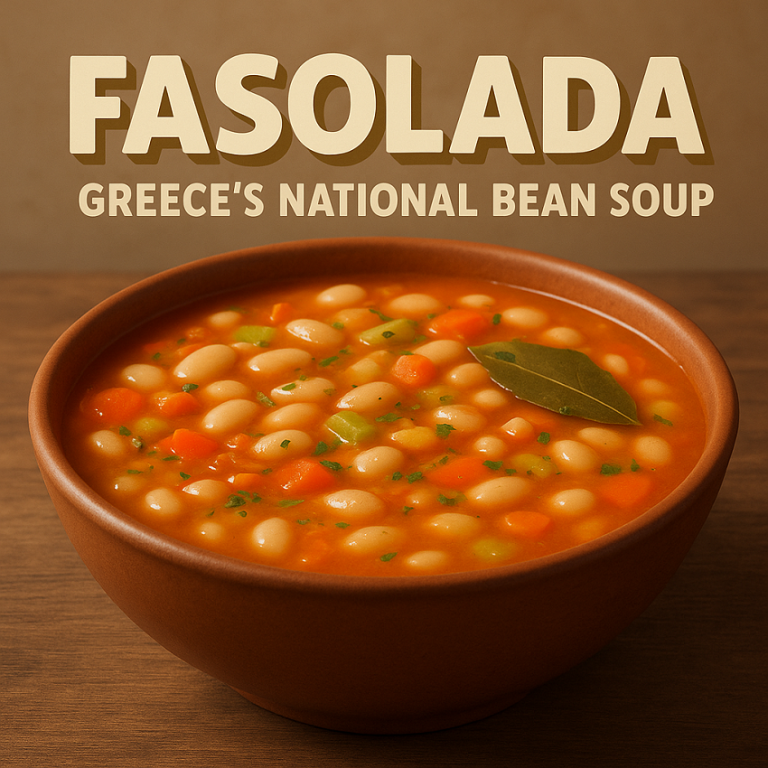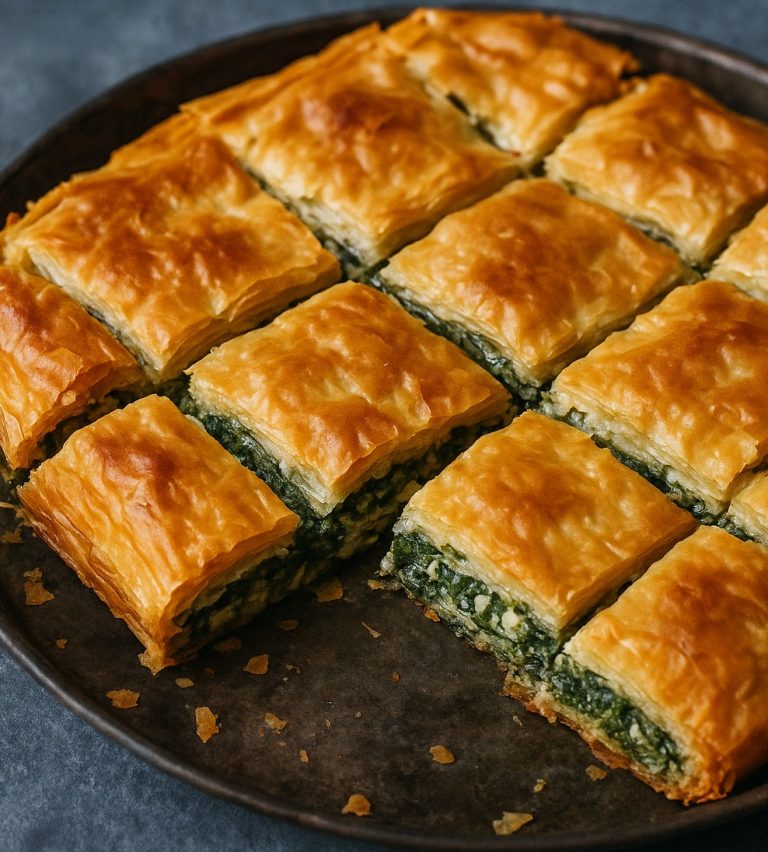
Spanakopita, a traditional Greek spinach pie, is not just a savory dish enjoyed year-round; it also makes for a delightful addition to Easter celebrations. With its flaky phyllo dough, rich spinach filling, and tangy feta cheese, spanakopita offers a delicious way to celebrate the holiday while incorporating the season’s fresh ingredients. In this article, we’ll explore the significance of spanakopita during Easter, its nutritional benefits, a detailed recipe, creative variations, and serving suggestions that can enhance your festive table.
The Significance of Spanakopita at Easter
In Greek culture, Easter is a time for family gatherings, feasting, and celebrating the arrival of spring. This holiday is filled with traditions that reflect the joy of renewal and togetherness. Foods prepared during this season often include fresh greens, which are abundant as the weather warms. Spanakopita, with its generous filling of spinach and herbs, is a popular choice for Easter meals and is often served alongside other traditional dishes.
A Symbol of Spring
Spanakopita symbolizes the freshness of spring, as it utilizes seasonal ingredients that are plentiful during this time. The use of greens in Greek cuisine is deeply rooted in tradition, making spanakopita a perfect dish for Easter celebrations. The vibrant green color of the spinach also represents new life and growth, themes closely associated with the Easter holiday.
Family Tradition
Preparing spanakopita can be a family affair, where generations come together to roll out the phyllo dough and prepare the filling. This communal activity not only reinforces family bonds but also keeps culinary traditions alive. Sharing stories and laughter while cooking adds to the joy of the holiday and creates lasting memories. In many Greek households, the preparation of spanakopita is often passed down through generations, making it a cherished family recipe.
Spiritual Significance
For many, Easter is a time of reflection and spiritual renewal. The act of cooking and sharing food holds profound meaning, as it brings families together and fosters a sense of community. Sharing spanakopita during Easter meals is a way to honor both family heritage and the spiritual essence of the holiday.
Nutritional Benefits
Spanakopita is not only tasty but also packed with nutrients. Here’s a closer look at some of its key ingredients:
- Spinach: Rich in vitamins A, C, and K, spinach is a powerhouse of nutrients. It contains antioxidants and is high in iron, which is essential for maintaining energy levels and overall health. Spinach also promotes healthy skin, hair, and bones.
- Feta Cheese: Feta adds a creamy texture and tangy flavor while providing protein and calcium. It’s lower in fat compared to many other cheeses, making it a healthier option. Additionally, feta contains beneficial probiotics that can aid digestion.
- Phyllo Dough: While phyllo dough is often considered indulgent, using it in moderation can be part of a balanced diet. It provides a satisfying crunch and lightness to the dish without overwhelming the palate.
- Herbs: Fresh herbs like dill and parsley not only enhance the flavor but also add additional vitamins and minerals. Herbs have been shown to have anti-inflammatory properties and can contribute to overall health.
Overall, spanakopita can be a nutritious addition to your Easter feast, offering a delicious way to enjoy greens and cheese while celebrating the season.
Preparing Spanakopita
Step-by-Step Instructions
Here’s a detailed guide to making spanakopita from scratch, ensuring you capture all the flavors and textures that make it such a beloved dish.
Ingredients
- For the Filling:
- 1 pound fresh spinach (or 1 package frozen spinach, thawed and drained)
- 1 medium onion, finely chopped
- 2 tablespoons olive oil
- 1 cup crumbled feta cheese
- 2 eggs, lightly beaten
- 1/4 cup chopped fresh dill
- 1/4 cup chopped fresh parsley
- Salt and pepper to taste
- For the Phyllo Dough:
- 1 package phyllo dough (thawed, if frozen)
- 1/2 cup olive oil or melted butter (for brushing)
Instructions
- Prepare the Filling:
- In a large skillet, heat the olive oil over medium heat. Add the chopped onion and sauté until translucent, about 5 minutes.
- Add the spinach and cook until wilted. If using frozen spinach, ensure it’s well-drained to avoid excess moisture. Remove from heat and let cool slightly.
- In a mixing bowl, combine the cooked spinach and onion with crumbled feta, beaten eggs, dill, parsley, and season with salt and pepper to taste. Mix until well combined.
- Assemble the Pie:
- Preheat your oven to 375°F (190°C).
- Grease a baking dish (approximately 9×13 inches) with olive oil or butter.
- Lay one sheet of phyllo dough in the baking dish, brushing it lightly with olive oil. Repeat this process, layering several sheets (about 5-6) for a sturdy base.
- Spread the spinach-feta filling evenly over the phyllo layers.
- Cover the filling with additional phyllo sheets, again brushing each layer with olive oil. You can create a layered effect with the phyllo, folding it over the edges to seal the filling.
- Bake:
- Before placing in the oven, cut the pie into squares or triangles to allow for even cooking and easy serving.
- Bake for 30–40 minutes, or until the top is golden brown and crispy. Let cool slightly before serving.

Creative Variations for Easter
While traditional spanakopita is beloved, there are many ways to adapt the recipe to suit your taste or dietary preferences. Here are some creative variations:
Mini Spanakopita
Create bite-sized versions of spanakopita by using phyllo cups or cutting smaller squares of phyllo dough. Fill them with the spinach mixture and bake for a perfect appetizer at your Easter gathering. These mini pies are great for parties and can be easily enjoyed as finger food.
Savory Additions
Enhance the filling with additional ingredients such as artichokes, leeks, or even sun-dried tomatoes for a unique flavor profile. Adding a hint of nutmeg can also elevate the dish, providing a warm, aromatic touch that complements the spinach and feta.
Vegan Spanakopita
For a plant-based version, replace the eggs with a mixture of silken tofu blended until smooth, and use a dairy-free cheese alternative. This way, everyone can enjoy this delightful dish, regardless of dietary restrictions. You can also add nutritional yeast to the filling for a cheesy flavor without dairy.
Sweet Variations
For a twist, consider making a sweet version of spanakopita by filling it with sweetened ricotta cheese and chocolate or fruit. This could serve as a fun dessert option for your Easter feast. You can use phyllo dough to create delicate pastries filled with fruit compote or a creamy custard.
Serving Suggestions
Spanakopita can be served warm or at room temperature, making it versatile for your Easter table. Here are some serving suggestions to enhance your meal:
- Accompaniments: Serve with tzatziki, a refreshing yogurt-cucumber dip, or a simple squeeze of lemon juice to brighten the flavors. A dollop of Greek yogurt on the side can also add creaminess.
- Salad Pairing: A Greek salad with tomatoes, cucumbers, olives, and red onions dressed in olive oil and vinegar complements spanakopita beautifully. The freshness of the salad balances the richness of the pie.
- Wine Pairing: Consider pairing with a light white wine, such as a Sauvignon Blanc or a dry rosé, which can enhance the meal’s flavors. A crisp, refreshing wine can cut through the richness of the feta and phyllo, making for a delightful dining experience.
Conclusion
Spanakopita is a cherished Easter treat that combines tradition, flavor, and nutrition. Its flaky crust and savory filling make it a crowd-pleaser, perfect for sharing with family and friends during the holiday. As you gather around the table this Easter, consider adding spanakopita to your menu for a dish that celebrates the spirit of spring and the joy of togetherness.
By incorporating spanakopita into your Easter celebrations, you not only honor culinary tradition but also create an opportunity for connection and joy. Whether you stick to the classic recipe or experiment with variations, spanakopita is sure to bring smiles and satisfaction to your holiday table.
As you prepare this delicious dish, remember that it’s not just about the food; it’s about creating memories with loved ones. The laughter, stories, and shared experiences that come with preparing and enjoying spanakopita will make your Easter celebration truly special. So roll up your sleeves, gather your family in the kitchen, and embark on the delightful journey of making spanakopita together. Enjoy the flavors of Greece and the warmth of family as you share this delicious pie at your Easter feast



